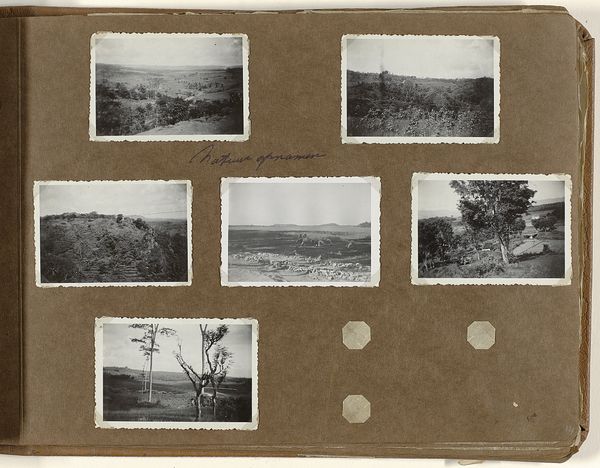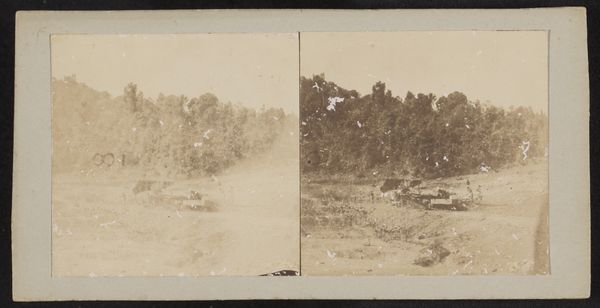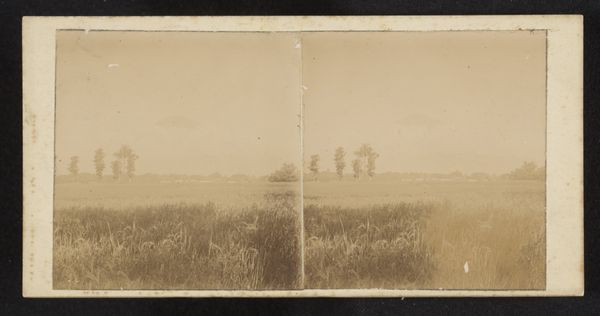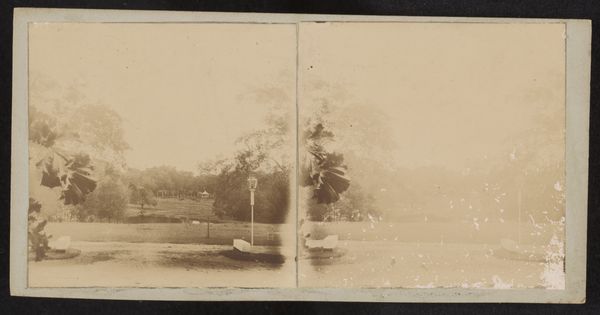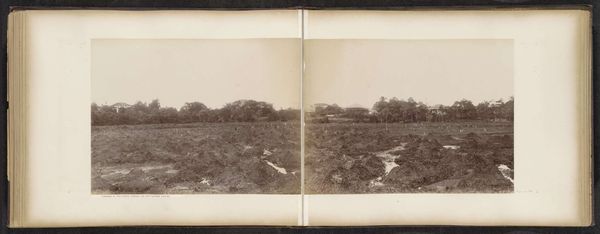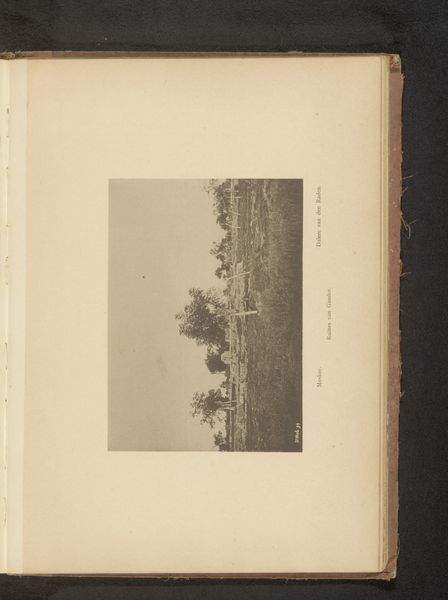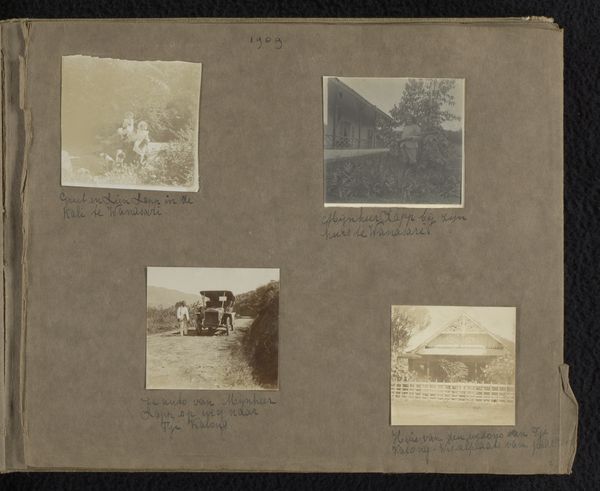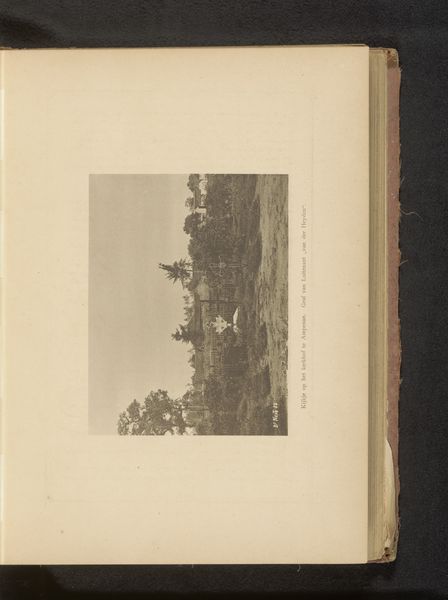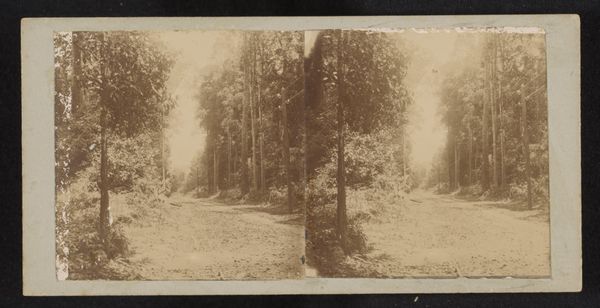
photography, gelatin-silver-print
#
pictorialism
#
landscape
#
photography
#
gelatin-silver-print
#
realism
Dimensions: height 54 mm, width 59 mm, height 88 mm, width 178 mm
Copyright: Rijks Museum: Open Domain
Curator: Standing here, we’re observing Robert Julius Boers’ "Huis aan bosrand," a gelatin-silver print believed to be created between 1900 and 1922. It currently resides in the Rijksmuseum. Editor: It's a bit of a gloomy scene, isn’t it? That stark black and white palette, the almost invasive thicket in the foreground... It feels a bit melancholic, somehow. Curator: I find that melancholy quite striking, especially when we consider pictorialism’s embrace of atmosphere. The hazy focus almost softens the starkness, drawing the viewer into that liminal space between civilization and nature. It makes me wonder about Boers's own relationship to this "edge of the woods". Editor: Pictorialism often sought to elevate photography to the status of art, right? By emulating painting styles? Here the framing is intriguing: those skinny trees create a barrier almost, and then that lonely house, a pale geometric form, seems almost trapped in the pictorial plane by this wall of trees and thick, tangled brush at eye-level. Curator: Precisely! There's this fascinating interplay between what is visible and concealed. The house, representing the familiar and domesticated, is simultaneously obscured and revealed. And with two side-by-side nearly identical frames, it's an intentional doubling of perspectives; are we meant to reflect our viewing experience? It also invokes certain photographic formats, stereoscopes in particular, where 3D-esque imagery allows you to insert yourself inside. Editor: It’s curious how realism blends with the artistry; a documentation is still so stylized and, as we noted before, quite gloomy. It makes you contemplate life on the fringe – the stark contrast between human and environmental forces. What was it like for those living in such lonely places? Curator: And doesn't that make this piece, seemingly small and unassuming, infinitely more evocative and moving? It’s about that search of finding stillness, finding isolation, perhaps finding a little pocket of yourself amidst it all. Editor: I’ll remember that feeling now; finding oneself at the margins, which feels appropriate given the actual house-on-the-edge-of-the-woods theme. Curator: And perhaps now the edges, as they come to be framed through photography, also come to tell stories.
Comments
No comments
Be the first to comment and join the conversation on the ultimate creative platform.

